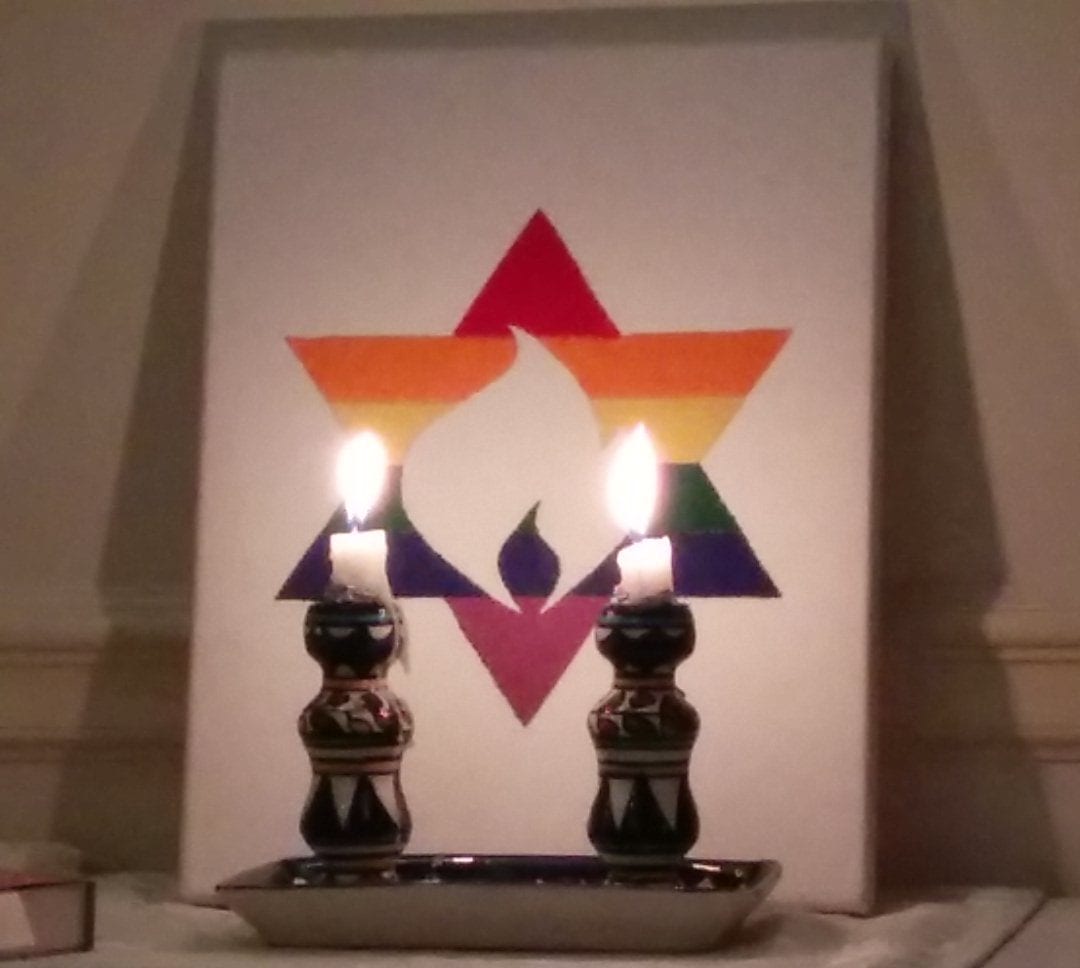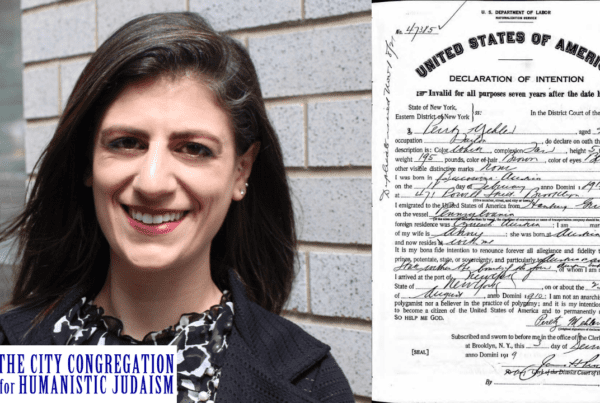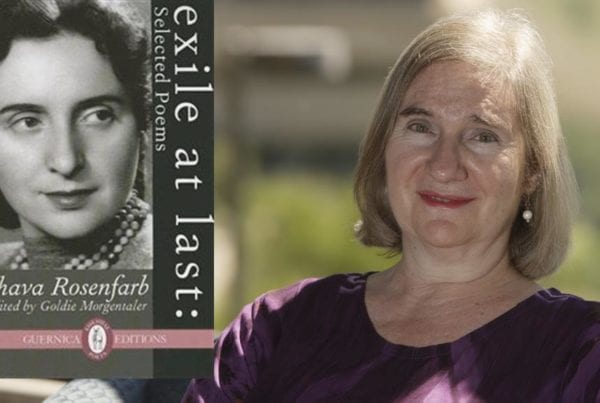
By Ray K.
Before we start discussing the genders in Judaism, I want to make clear that this will not be the complete story. I rely heavily on the Talmud and Mishna to understand the social and cultural understanding of gender in Judaism of the past two millenia. As the Talmud and Mishna are legal corpuses, this attempt resembles trying to understand gender in contemporary American culture through title IX, bathroom bills etc. This can be informative, as in the case of NY crossdressing laws being changed in the 70s, but does not tell us the whole story of the historical and social context.
Another thing I want to sort out before we get into it, is the components of gender. Gender is comprised of A few things: Gender identity is what gender a person feels they are. If you feel that “man” or “woman” or “neither” is the correct word for who you are. If I passed you in a store and said “excuse me, mister”, would it feel good or not? Sometimes people have gendered emotions but haven’t thought about or figured out their gender identity, so they may know they’re not “mister” or “ma’am” but not sure what they are. This is entirely internal to a person’s experience. The law can never cover that.
A second thing is gender presentation. Hair, clothes, make up and similar choices are ways to signal our gender identity and station in life. This has meaning in a social context, but it’s also something that changes from culture to culture and from one historical period to another. The way people dress, their speech patterns, their body language etc reflect gender, but also class and social groups they align themselves with.
The American founding fathers wore tight stockings to show off their well-toned calves; today, to signal similar gender and class, they would be more likely to wear suits that hide them.
The sages discuss some things that are appropriate for men or women, and that can teach us about their understanding, but they do not discuss gender expression or presentation as such, although there are a few laws regarding it. To learn more about that, you can read Pierre Bourdieu, about habitus.
Yet another facet of gender is gender roles. This encompasses what is considered appropriate or required of a person of that gender, in that culture. It is usually not clearly encoded in laws, but reflected in them. For example, the social expectation that women do most of the domestic and parenting work, and prioritize it over their career, is reflected in various laws regarding custody of children, alimony etc. We can resent that assumption, but we can’t deny it exists and is reflected in laws. When looking at laws to understand these, we may also want to ask, “Who were the lawmakers? What sort of laws benefitted them?”
The ways gender presentation and gender roles are enforced, also known as gender policing, are varied. Laws, comments, violence, and biases all play a part.
We will be talking about the legal meaning of gender, which is to say, the sages didn’t discuss the inner experience of gender identity; they cared about the legal ramifications of gender for the purposes of contractual obligations in marriage, to the function of the community in gatherings such as prayer in a Minyan, and occasionally touched on gender policing with regard to what the community sees as acceptable.
Very often, the sages or rabbis did not understand the difference between sex and gender. And so, occasionally we find them describing physical attributes, and in other cases, social roles and functions.
I’m going to skip over the genders man and woman, assuming you are all familiar with them, at least superficially.
The definition of Ailonit, literally “Ram-like”, starts off with a simple distinction of women who are presumed infertile, and commonly have “masculine” traits. Later, during various discussions, the sages define how to legally assess whether a woman is Ailonit or not: they begin by defining that women who are not infertile since birth, but acquired it via some injury, trauma or illness, are not considered such. Later they add the criteria of growing breasts, body hair patterns, fat distribution, un-usable vagina or lack of pleasure from vaginal penetrations, and deep voice.
Some sages say even one of these is enough of a sign for Ailonit, and some say you need all five. If one is enough, then cis women with a deep voice or vaginismus may also be considered such. But it now becomes clear why when Hebrew was revived, Ailonit was taken to mean a trans woman, at least by some.
Interestingly, in Jewish legend, Rashi and others say Sarah, wife of Abraham, was an Ailonit. She is also said to have been a beautiful woman, so we know these things are not mutually exclusive. That can inform us about the meaning of conventional beauty at the time, which might have included tall and strong. (We know from the song of songs they also included black curly hair and having all your teeth, preferably white.)
The legal restrictions regarding Ailonit mostly have to do with marriage. The sages say that as a man must have children to be fruitful and multiply, so a man can only marry an Ailonit as an additional wife after having children, but may have sex with her. Maimonides says that if a man marries an Ailonit knowing she is an Ailonit, he owes her everything a husband owes a wife; if he doesn’t know it at the time of marriage, the sages are split about whether the marriage can be annulled, or the man has to divorce the woman. There are further discussions about whether the man can marry an additional wife, how the assets need to be split in the case of divorce, whether or not a man can re-marry a woman he divorced because she’s an ailonit, if he told her that is the reason, etc.
Now I want to stop a minute here and make clear that in Judaism, everyone transitions their legal gender. A child has a childhood gender – Katan or ketanah. About 6 months prior to expected adulthood, that changes to the legal status of youth – Naar or Naarah. Only when exhibiting certain traits, or by reaching a certain age without exhibiting them, does a person assume their adult gender.
The Ailonit, say the sages, transitions from ketanah to Ailonit without ever going through Naarah.
That leads to various rulings about the compensation her father is paid if she is assaulted sexually, until what age she can refuse marriage arranged by her family, and what age she is released if sold into slavery. These things are less relevant today, I hope.
Regarding the binary parallel, the infertile man, or Saris, there is less legal discussion. Women have no legal or moral obligation to have children in Judaism, and in fact can choose to be exempt from marriage on the grounds that pregnancy and labor are a risk to life. Therefore, being married to an infertile man is not considered a legal problem. Additionally, the sages don’t discuss men’s infertility the same way, so we can’t be sure if they knew how to tell if a man is infertile. The only distinction is between a man infertile since birth – Saris Khama, khama being the sun, meaning he was infertile from the first time he ever saw the sun, and a man made infertile by the actions of humans – Saris Adam.
Saris Adam is forbidden from marriage. I suppose there is a hidden assumption that a man who would elect to avoid fathering children is unfit or uninterested in marriage; another option is that not prioritizing parenting is considered an offense to the entire community.
Another legal discussion I could find regarding Saris is whether his widow is owed children from his brother, and if the case is different for born infertile vs made infertile.
In modern times, the term has come to mean eunuch, and so it isn’t used for trans men, but there’s no reason why it couldn’t have been used that way at ancient times.
Now we reach the nonbinary genders. I’ve seen it claimed these are edge cases for the binary system, but just like the Ailonit and Saris, these were real cases that were brought to the sages. The Ailonit and the Saris are either trans or intersex, having a hormonal system that doesn’t act as expected of either someone with that set of genitals, or that social role.
Similarly, the legal system mixes together non binary genders and persons who are intersex, that is, anyone who does not easily fit into the binary classification.
The term the sages use is Androgynous. It is interpreted in a few different ways to encompass more than one gender. Some rabbis say the Androgynous is half man half woman; some say it is possibly-man, possibly-woman; some say it’s a different thing altogether; some say it is all three things; and there are even more interpretations.
The Rabbis Israel Lipschitz in the 18th century, Salaman Eliyahu in the 19th century, and Isaac ben Jacob Alfasi ha-Cohen in the 10th century argue it is a person who we might consider today bi-gender or gender fluid, that is, sometimes more man, sometimes more woman. Alfasi says the person changes from one month to another – we can assume he means gender presentation or performance. Lipschitz talks about the masculine or feminine “forces” in the person.
Other rabbis understand the androgynous nature to be persistent, that is, the person is of multiple genders at all times. In the 2nd century, Rabbi Yossi, also known as Yose ben Khalepta, insists that “an androgynos is a creation[briya] in their own right and the sages could not decide whether they are man or woman.”
The various ways of assuming partial femininity, partial masculinity, partial both, fully both, neither, et cetera, means that androgynous is likely a general category of gender, and not a specific gender.
A few medieval Jewish books tell us about androgynous people who gave birth, which further solidifies our understanding that androgynous is not just a physical intersex condition, but also a gender identity. It is also clear that the interaction with outside influence changes the way the Rabbis understand the meaning of sex and gender. For example, Rabbis who worked as doctors, like Maimonides, seem to focus on issues of the body, and others may focus on social roles.
So here we come to the last gender: the Tumtum. This word doesn’t appear in the Torah, it appears in the Mishnah, and is sometimes seen as a subcategory of the Androgynous, and therefore legal ramifications are similar. The word indicates closedness, and as such, in modern Hebrew it may indicate someone being closed minded or obtuse, but originally it means that the sex and gender of the person is hidden and unclear. As their gender is not clear, they may be called, today, agender or gender-void, though possibly questioning or exploring.
The Tumtum is another example of the inherent ability to transition genders in Judaism. As the person is never assigned a gender, they may turn to be one of the other genders at any point. Once the tumtum’s gender is revealed, they are considered fully of that gender from that point on, but not previously.
In conclusion, like most cultures, Judaism was never a culture of two genders. Colonialism and nationalism have shaped most modern cultures to some extent, and in the last couple of centuries we can see that with more orthodox rabbis understanding multiple genders as a medical topic, rather than a healthy part of the Jewish culture, community and history. But there’s no reason we can’t acknowledge and embrace that part of our culture today.
To see upcoming events or watch them live, check out our calendar



